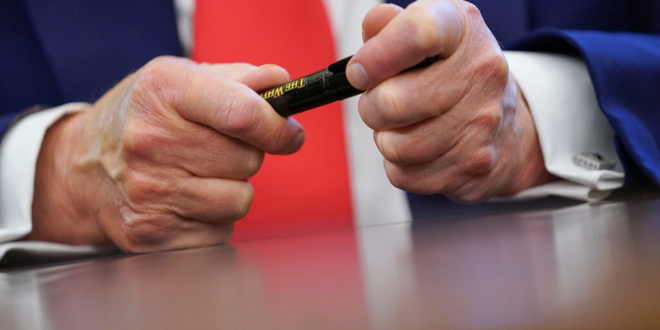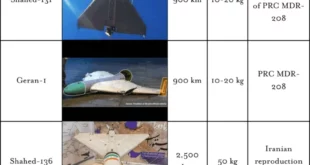Last Saturday’s mostly indirect negotiations between US Special Envoy Steve Witkoff and Iranian Foreign Minister Abbas Araghchi marked an abrupt turnaround for US President Donald Trump. In 2018, during his first term, Trump ended US participation in the Joint Comprehensive Plan of Action (JCPOA) negotiated by his predecessor, President Barack Obama, and criticized the deal’s sunset clauses, sanctions relief, and failure to address Iran’s ballistic missile program and regional malign influence.
Despite those legitimate critiques of the deal, many Iran-watchers (myself included) believed that the JCPOA was the best of a lot of bad options because it provided the one thing that is the hardest to cultivate: time.
In 2015, it was widely understood that Iran was still months to years away from having a workable nuclear weapon. In buying time, there was an opportunity to use it to try to reach an agreement that permanently and fully resolved the issue, with the knowledge that if Iran cheated on the deal, it would still be months to years away from having a nuclear weapon.
Today, that time no longer exists. Any deal, therefore, would have to be far more stringent than the JCPOA because Iran is now one to two weeks from having enough 60 percent enriched uranium to fuel a nuclear bomb, with the ability to fuel up to five additional bombs in the months to follow. Moreover, Iran has advanced efforts for a crude nuclear device, even if US intelligence is correct that the country is not “building a nuclear weapon” in the traditional sense.
Trump’s decision to leave the JCPOA did increase pressure on Iran, largely through sanctions. But it also provided the country an excuse to speed ahead on its efforts to enrich uranium and advance its nuclear program, beginning the process of leading Iran’s nuclear program to where it is today. Ongoing debate within the Trump administration over the right approach to Iran continues to cause confusion as to the president’s ultimate strategy, even as negotiations are already underway. In February, Trump signed a National Security Presidential Memorandum that reimposed “maximum pressure” on Iran and explicitly called for denying Iran not only nuclear weapons but also intercontinental ballistic missiles and for countering its terrorism activities.
Last month, National Security Advisor Mike Waltz emphasized the key points of the memorandum in multiple interviews in which he highlighted that “all aspects of Iran’s [nuclear] program” have to be addressed, not just enrichment but also ballistic missiles, weaponization, and Iran’s support for terrorism. In other words, a deal with Iran needs to be holistic, not just narrowly focused on its nuclear program.
Except, in the days before negotiations began, Trump said, “I’m not asking for much, they can’t have a nuclear weapon.” Witkoff, intentionally or not, went even further, indicating that Iran could keep its nuclear program operating with a cap of 3.67 percent uranium enrichment—an amount in line with a civilian nuclear program—and separately said, “Where our red line will be, there can’t be weaponization of [Iran’s] nuclear capability.” Earlier this week, he seemingly walked back those statements to align closer with Trump’s statement, even as it remains uncertain if the president would agree to Iran having a civilian nuclear program.
Trump is typically transparent about his preferences in policy matters. Too often, his explicit statements are not taken seriously, leading many to be surprised when he actually follows through on them (see the reaction to his imposition of sweeping tariffs). The potential that Trump, always eager to make a deal, might be content with an agreement that only addresses Iran’s nuclear program should not be underestimated.
It’s not without precedent for Trump to seek a deal very similar to one he previously spoiled. In 2019, Trump replaced the North American Free Trade Agreement, which he called a “disaster,” with the United States-Mexico-Canada Agreement, which had relatively minor differences.
And while it’s worth exploring if Iran could be convinced to fundamentally change its traditional redlines and agree to restrictions far more stringent than in the JCPOA—including that conditions placed on its nuclear program be permanent and not time-bound—such a result is highly unlikely. That leaves the possibility of a narrow agreement, which risks doing more harm than good.
It would kick the nuclear can down a far more dangerous road than existed in 2015, and it would provide sanctions relief that is likely to be used to bolster terrorist partners such as the Houthis and help reinvigorate a now diminished Hezbollah, all while advancing Iran’s ballistic missile program.
Moreover, as seen following the JCPOA, such a deal would ensure there is insufficient leverage remaining for the United States and its allies to negotiate over these broader challenges and little Iranian interest in doing so.
Malign influence, terrorism, and ballistic missiles may not be existential threats for regional allies, especially Israel, in the same way a nuclear-armed Iran would be. But these are the issues, not Iran’s nuclear program, that have been the root cause of conflict, death, and destruction in the Middle East over the last three decades. Viewing them as less important than the nuclear issue probably guarantees not only increased conflict in the coming years but also wars that are more lethal, as barriers and access to advanced technologies diminish.
As negotiations are set to continue this weekend in Rome, Trump is right to try to seek a deal before okaying, or participating, in military action against Iran. But he should keep in mind that, unlike in 2015, time is almost up.
 Eurasia Press & News
Eurasia Press & News



